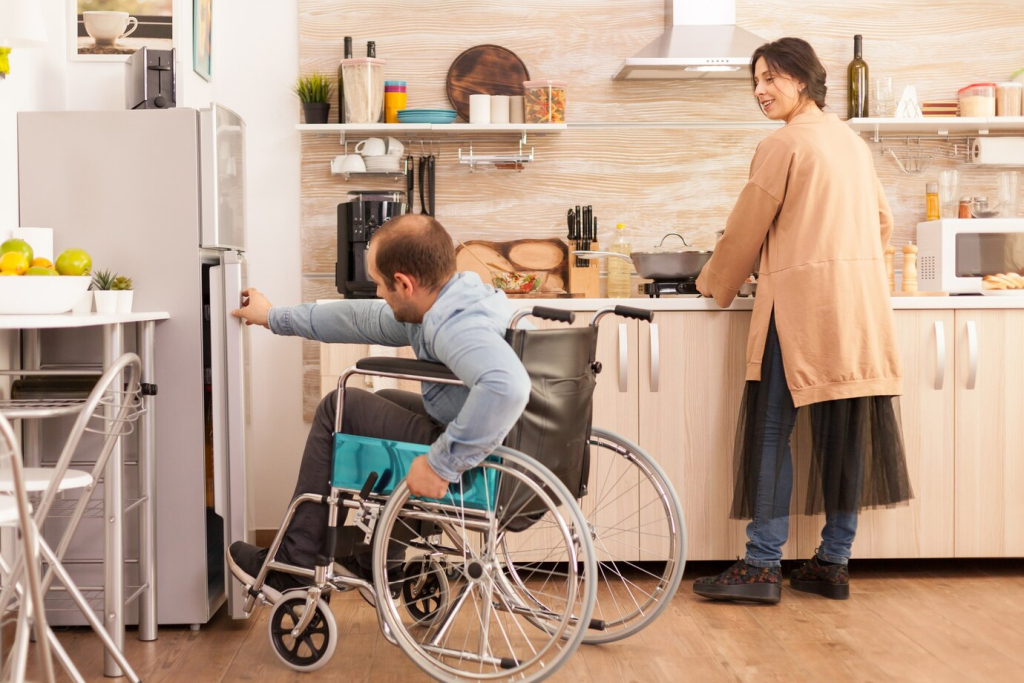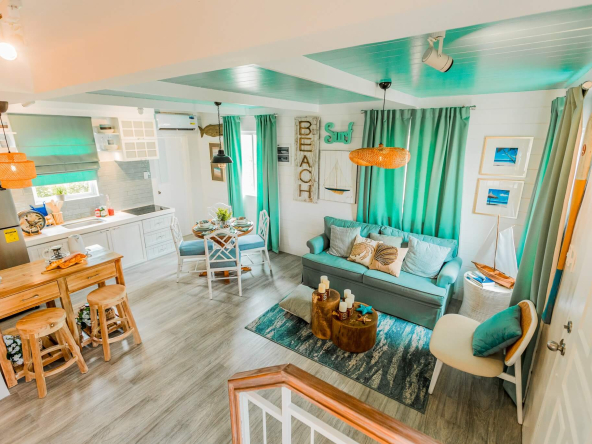Understanding the Value of Inclusive Housing Design for Persons with Disabilities

Inclusive housing design is an essential aspect of creating living spaces that cater to the diverse needs of individuals, including persons with disabilities. It goes beyond conventional architectural principles and aims to provide equal access and opportunities to all residents.
This article explores the value of inclusive housing design, focusing on universal design principles for accessible homes, meeting the housing needs of senior citizens and people with disabilities, and the significance of grab bars and wider doorways in promoting inclusivity.
By embracing inclusive design, the housing market can contribute to a more inclusive society where everyone has the opportunity to thrive.
The Impact of Inclusive Housing on the Real Estate Business
With an increasing demand for accessible homes, developers and real estate agents who prioritize inclusive design in the building and construction of a house as well as facilities, can tap into a significant market segment.
By incorporating universal design features and elements in their projects, such as gentle slopes of the land, accessible entrances and elevators, they can attract a larger pool of potential buyers and renters.
Additionally, inclusive housing design can enhance the reputation of real estate businesses, showcasing their commitment to social responsibility and inclusivity.
Accessible Housing Options and Affordable Housing Initiatives
Ensuring equal access to housing for persons with disabilities is not limited to high-end properties. Affordable housing initiatives play a crucial role in providing accessible housing options for individuals of all income levels.
Governments and organizations are taking proactive steps to promote inclusive housing by implementing policies and regulations that require accessible features in new home constructions.
These initiatives aim to bridge the gap and ensure that individuals with disabilities have equal opportunities to find suitable and affordable housing.
The Importance of Inclusive Design for Persons with Disabilities in Housing
Inclusive housing design holds immense importance for a person with disability, even for children, as it promotes independence, safety, and a better quality of life. Individuals with disabilities often face numerous barriers in their daily lives, and inaccessible housing exacerbates these challenges.
By implementing universal design principles, housing can be tailored to accommodate the needs of all residents, regardless of their physical abilities. The inclusion of such initiative puts family at ease as their love one benefits from such services.
Universal Design Principles for Accessible Homes
Universal design principles form the foundation of inclusive housing design. The seven principles of universal design include equitable use, flexibility in use, simple and intuitive use, perceptible information, tolerance for error, low physical effort, and size and space for approach and use.
By adhering to these universal design features, professionals like architects and designers, can ensure that housing projects cater to the needs of diverse individuals. Here are some some ways that key aspects of universal design standards can be integrated in a home:
Physical Access
Accessible homes with universal design ensure people of ramps, elevators, and wide doorways to facilitate easy movement for individuals using mobility aids, for example, wheelchairs or walking aids.
Adaptable Spaces
Living spaces should be designed to accommodate diverse needs. Adaptable features and elements like adjustable countertops, grab bars, and lever-style door handles can provide assistance and make a significant difference in promoting independence and accessibility.
Sensory Considerations
Individuals with sensory impairments, such as visual or hearing impairments, should be considered in the design process. Incorporating features like visual alarms, well-lit spaces, and tactile guidance can enhance accessibility for individuals with sensory disabilities.
By incorporating these universal design standards, accessible homes can provide a safe and comfortable living environment for individuals with disabilities, enabling them to live independently and with dignity.
Creating Inclusive Living Spaces for All
To develop inclusive living spaces, architects and designers must consider both the communal and private spaces within a home. Communal spaces, such as living rooms and kitchens, should be designed to accommodate wheelchair users, with wider doorways and open floor plans.
Private spaces, such as bedrooms and bathrooms, should include features like grab bars and lever-style door handles to enhance accessibility. Furthermore, incorporating adjustable countertops, non-slip flooring, and well-lit areas can further enhance the functionality and safety of the living spaces.
The Role of Grab Bars and Wider Doorways in Inclusive Housing
Grab bars and wider doorways are essential elements of inclusive housing design. These features promote safety, accessibility, and independence for people with disabilities.
Grab bars provide stability and support for individuals with mobility impairments, helping them navigate the bathroom, shower, and other areas of the home with confidence.
By installing grab bars in bathrooms, near toilets, and in other key areas, inclusive housing design ensures that individuals with disabilities can maintain their independence and perform daily activities with ease.
Wider doorways are another important aspect of inclusive housing design. They accommodate mobility aids such as wheelchairs and walkers, allowing individuals with disabilities to move freely throughout their homes.
Wider doorways not only enhance accessibility but also contribute to a more open and inclusive living space for all residents.
By incorporating grab bars and wider doorways, inclusive housing design promotes equal opportunities and independence for individuals with disabilities, creating living spaces that are accessible to everyone.
Meeting the Housing Needs of Senior Citizens and People with Disabilities
As the population ages, the percentage of demand for accessible and affordable housing for senior citizens and people with disabilities is on the rise. The housing market must adapt to meet these changing needs. Inclusive housing design plays a pivotal role in addressing the unique challenges faced by these individuals.
Senior citizens often encounter mobility issues and require homes that are designed to accommodate their changing needs. Inclusive design features such as step-free entrances, well-lit pathways, and bathroom modifications can greatly enhance the accessibility of homes for senior citizens.
Additionally, incorporating age-friendly design principles like non-slip flooring, lever-style door handles, and easy-to-reach cabinets can create a safe and comfortable living environment for older adults.
Similarly, individuals with disabilities have specific accessibility requirements that can be met through inclusive housing design.
Features like wider doorways, reinforced bathroom walls for grab bar installation, and accessible kitchen counters can significantly improve the quality of life for people with disabilities.
By prioritizing inclusivity in housing projects, the real estate business can contribute to a more equitable society where individuals with disabilities can live independently and participate fully in their communities.
Conclusion
The value of inclusive housing design extends beyond accessibility; it encompasses creating living spaces that foster a sense of belonging and dignity for all individuals. By prioritizing inclusivity in the real estate business, we can build a future where everyone has the opportunity to thrive.
Let us embrace inclusive housing design and work towards a society where homes truly become homes for all.

Celebrate Life’s Milestones in Camella!
Make unforgettable memories in a Camella home.
Our communities are designed to elevate your living experience.

